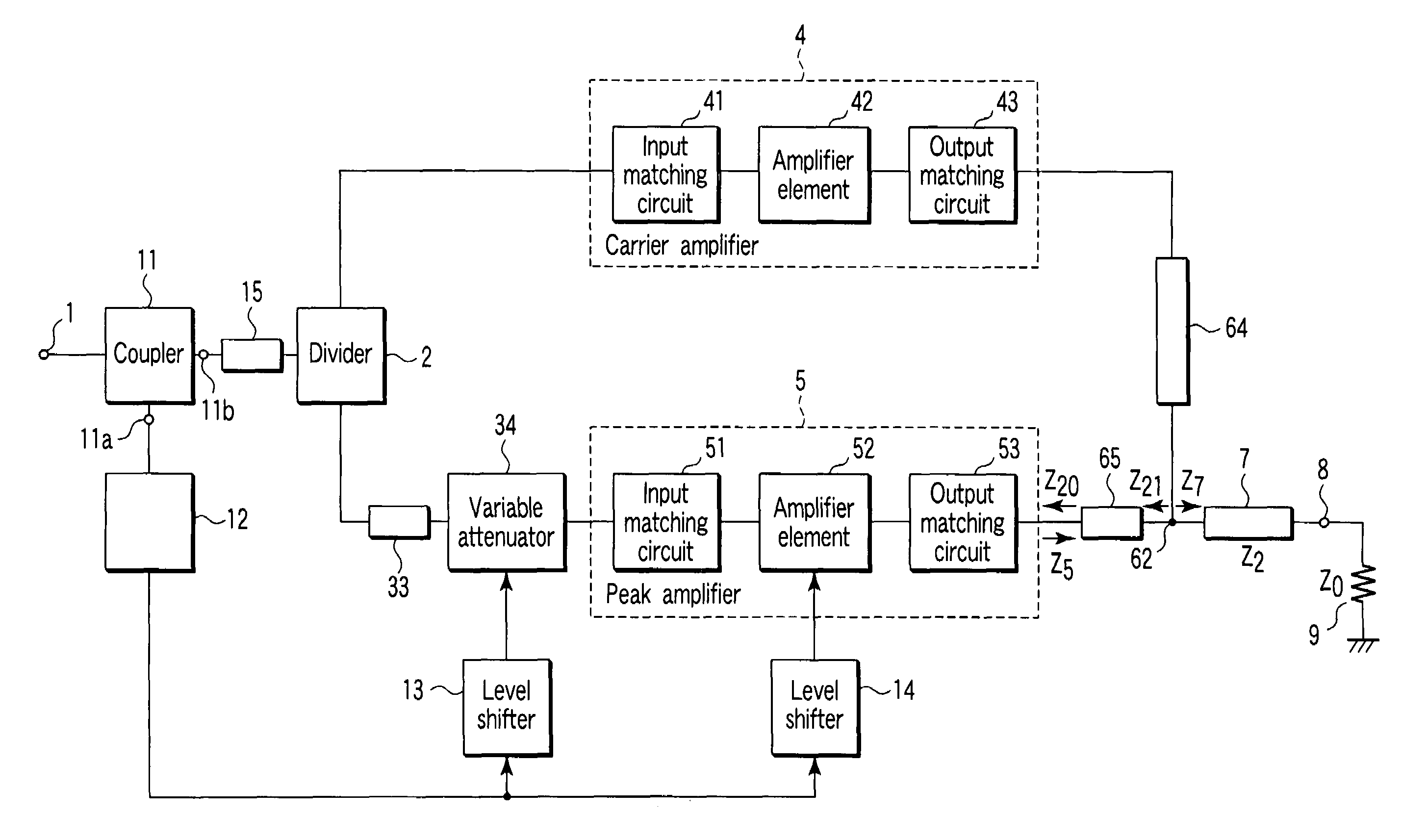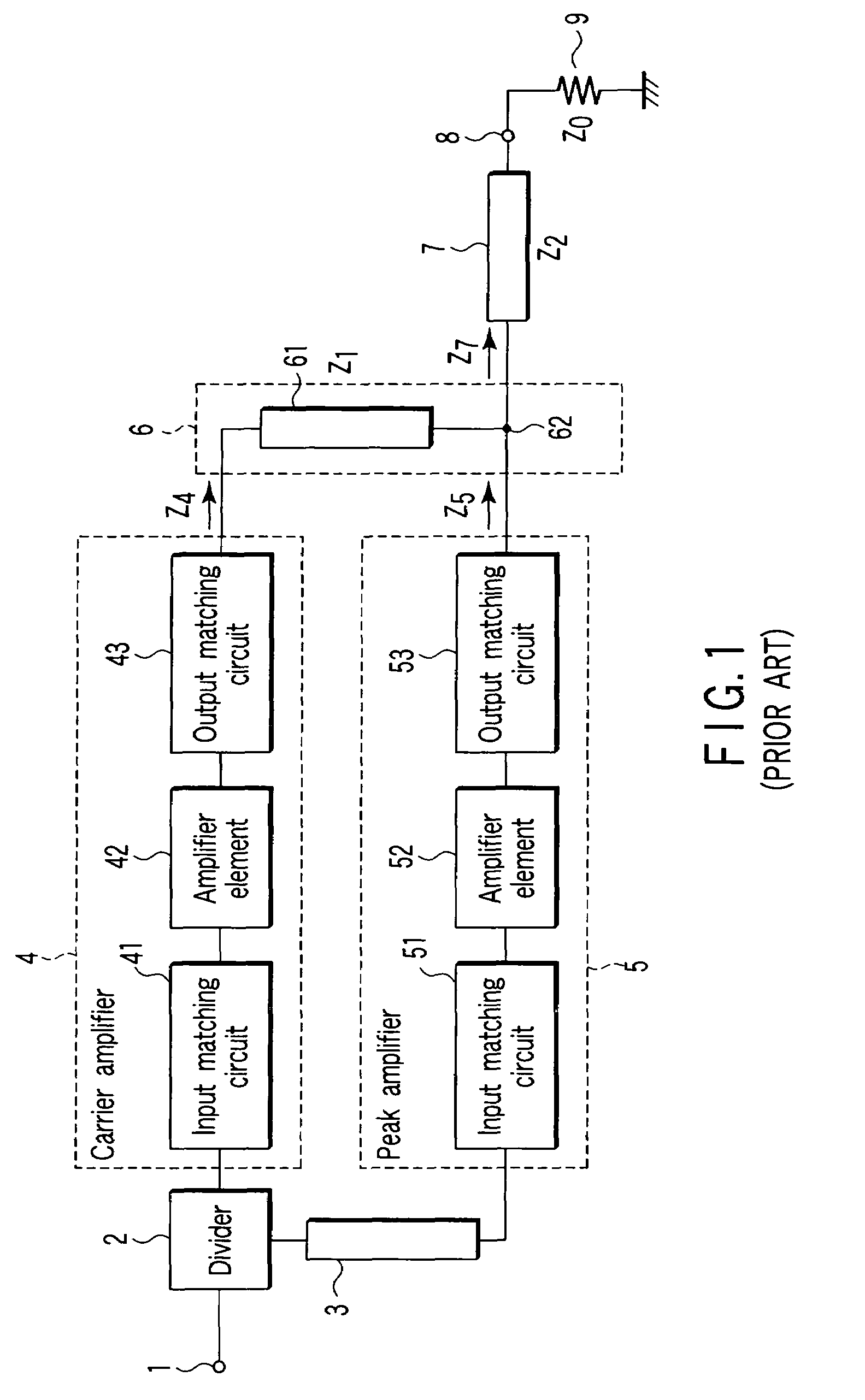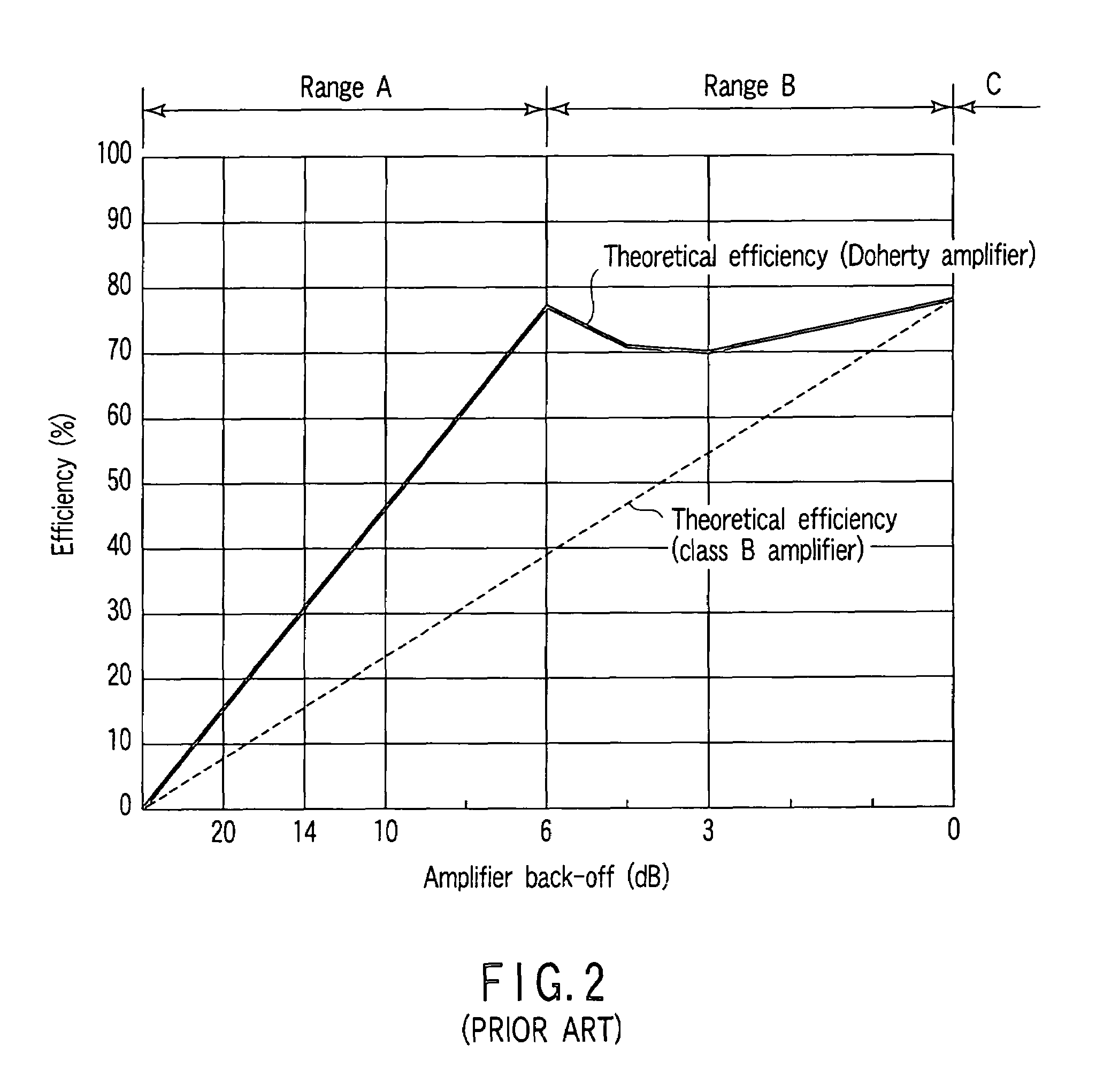Doherty amplifier with improved linearity
- Summary
- Abstract
- Description
- Claims
- Application Information
AI Technical Summary
Benefits of technology
Problems solved by technology
Method used
Image
Examples
first embodiment
[0037]Referring to FIG. 4, in an amplifier apparatus according to a first embodiment of the invention, an input signal from a signal input terminal 1 is input to a coupler 11. The coupler 11 is, for example, a T-branch line formed on a wiring substrate, a 3-dB coupler or an unequal divider, and includes a first coupling terminal 11a and second coupling terminal 11b. The first coupling terminal 11a is connected to the input terminal of a level sensor 12, and the second coupling terminal 11b is connected to the input terminal of a delay line 15. The level sensor 12 is, for example, a wave detector. The output terminal of the delay line 15 is connected to the input terminal of a divider 2.
[0038]One output terminal of the divider 2 is connected to the input terminal of a carrier amplifier 4 that comprises an input matching circuit 41, amplifier element 42 and output matching circuit 43. The other output terminal of the divider 2 is connected to the input terminal of a variable attenuato...
second embodiment
[0063]Referring to FIG. 6, an amplifier apparatus according to a second embodiment will be described. As shown in FIG. 6, the amplifier apparatus of the second embodiment is acquired by adding, to the apparatus of the first embodiment, a level shifter 16 provided between the level sensor 12 and preamplifier 54, a preamplifier 44 that is provided at the input side of the carrier amplifier 4 and operates as a class AB amplifier, and a preamplifier 54 provided at the input side of the peak amplifier 5. The signal sensed by the level sensor 12 is converted into a bias voltage by the level shifter 16, and input to the control terminal of the preamplifier 54. The bias voltage controls the preamplifier 54 to shift from class C to class AB. The other elements of the second embodiment are similar to those of the first embodiment. They are denoted by corresponding reference numerals, and are not described in detail.
[0064]The level shifter 16 performs bias control on the preamplifier 54 to shi...
third embodiment
[0067]Referring then to FIG. 7, an amplifier apparatus according to a third embodiment will be described.
[0068]As shown in FIG. 7, the third embodiment is acquired by inserting a variable attenuator 21 and a preamplifier 22, which operates as a class AB amplifier, between the delay line 15 and divider 2 of the first embodiment. Further, the signal sensed by the level sensor 12 is converted into a control voltage by the level shifter 13 and then input to the variable attenuator 21. Furthermore, the third embodiment employs no element corresponding to the variable attenuator 34 in the first embodiment. Since the other elements of the third embodiment are similar to those of the first embodiment, they are denoted by corresponding reference numerals, and are not described in detail.
[0069]The signal input to the input terminal 1 is guided to the coupler 11. From the coupler 11, signals are output to the first and second coupling terminals 11a and 11b. The signal output from the second co...
PUM
 Login to View More
Login to View More Abstract
Description
Claims
Application Information
 Login to View More
Login to View More - R&D
- Intellectual Property
- Life Sciences
- Materials
- Tech Scout
- Unparalleled Data Quality
- Higher Quality Content
- 60% Fewer Hallucinations
Browse by: Latest US Patents, China's latest patents, Technical Efficacy Thesaurus, Application Domain, Technology Topic, Popular Technical Reports.
© 2025 PatSnap. All rights reserved.Legal|Privacy policy|Modern Slavery Act Transparency Statement|Sitemap|About US| Contact US: help@patsnap.com



